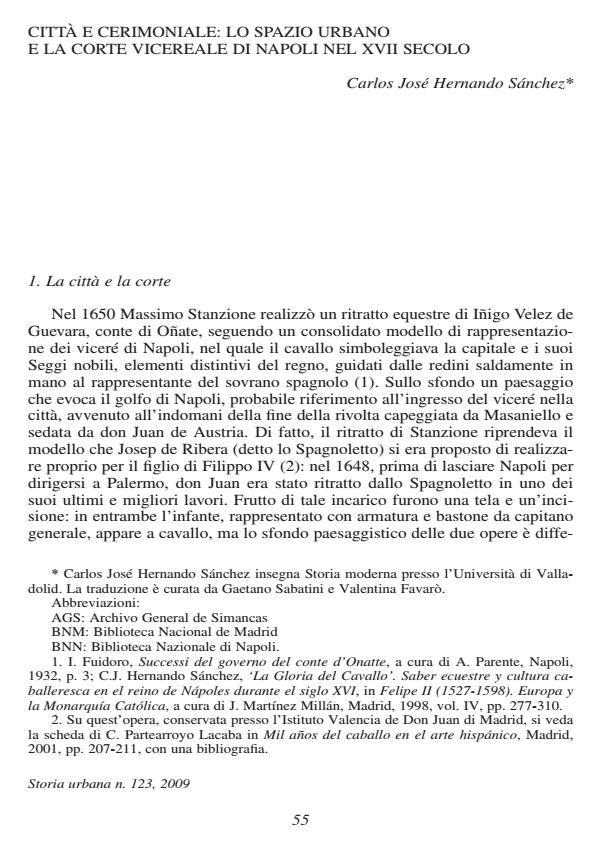Città e cerimoniale: lo spazio urbano e la corte vicereale di Napoli nel XVII secolo
Titolo Rivista STORIA URBANA
Autori/Curatori Sànchez Carlos Josè Hernando
Anno di pubblicazione 2009 Fascicolo 2009/123 Lingua Italiano
Numero pagine 28 P. 55-82 Dimensione file 5769 KB
DOI 10.3280/SU2009-123003
Il DOI è il codice a barre della proprietà intellettuale: per saperne di più
clicca qui
Qui sotto puoi vedere in anteprima la prima pagina di questo articolo.
Se questo articolo ti interessa, lo puoi acquistare (e scaricare in formato pdf) seguendo le facili indicazioni per acquistare il download credit. Acquista Download Credits per scaricare questo Articolo in formato PDF

FrancoAngeli è membro della Publishers International Linking Association, Inc (PILA)associazione indipendente e non profit per facilitare (attraverso i servizi tecnologici implementati da CrossRef.org) l’accesso degli studiosi ai contenuti digitali nelle pubblicazioni professionali e scientifiche
Città e cerimoniale: lo spazio urbano e la corte vicereale di Napoli nel XVII secolo - City and ceremonial: urban space and the vice-royal court during the 17th century in Naples The article intends to refute the historiographical tradition that, starting from the so-called Masaniello revolt, maintains the dramatically negative effects of the Spanish presence in Naples. Actually, the Spanish government was characterised for an high level of attention and for a constant effort of communication with Neapolitan community, both on popular and aristocratic level, although without giving up the basis of the royal power. The process of mediation was carried out through a series of complex ceremonials, also aimed to shape the urban space. The vice-royal court was the central point of this process, from which spread all over the city the courtesan etiquette, based on the personal honour. The religious devotions, of course, played an important role in the ceremonials, as they were necessary to reinforce the process of political legitimation of the Spanish power. Some particular cults, linked to specific areas in the town, were adopted by the vice-royal entourage as a complementary way to emphasize the Spanish presence in town.;
Sànchez Carlos Josè Hernando, Città e cerimoniale: lo spazio urbano e la corte vicereale di Napoli nel XVII secolo in "STORIA URBANA " 123/2009, pp 55-82, DOI: 10.3280/SU2009-123003